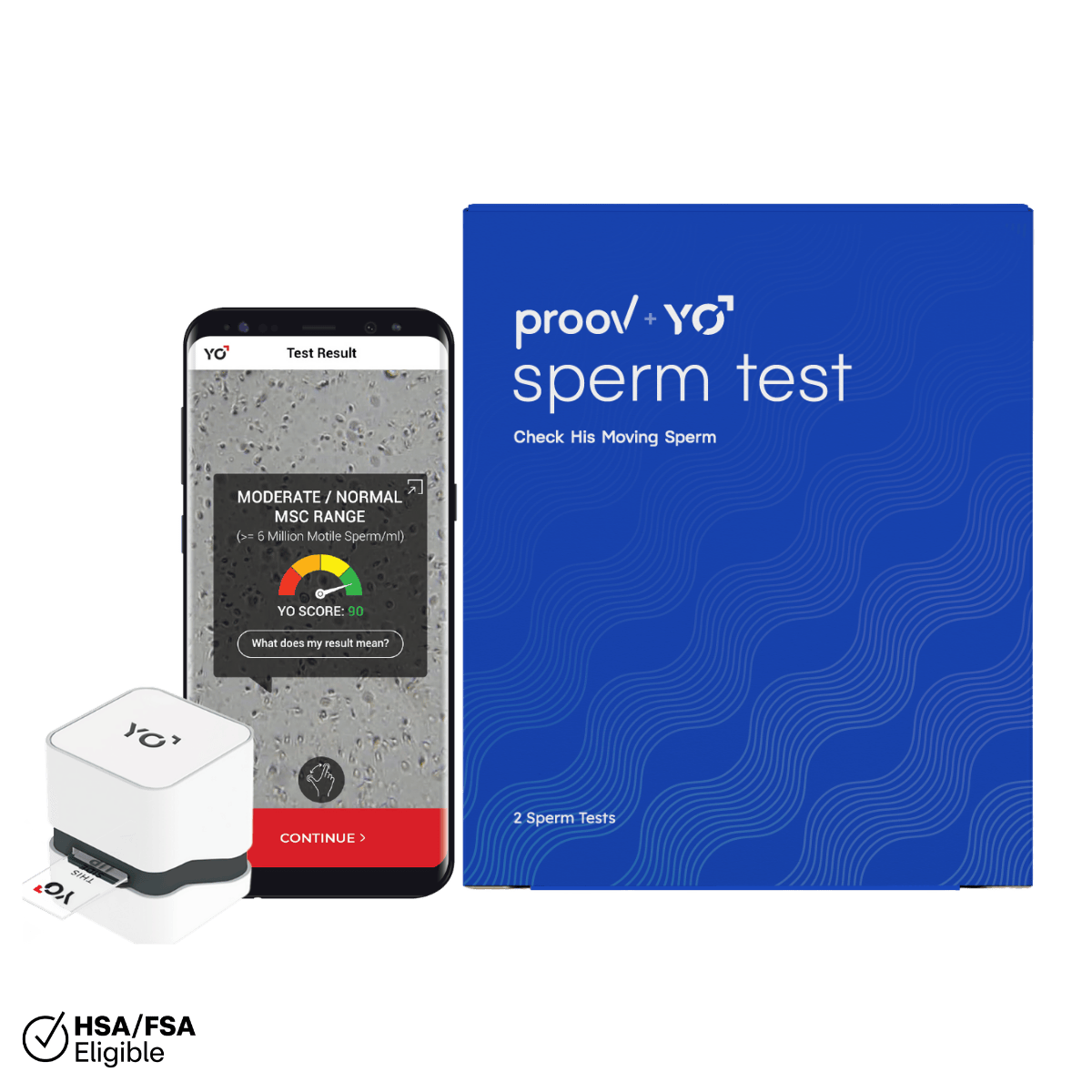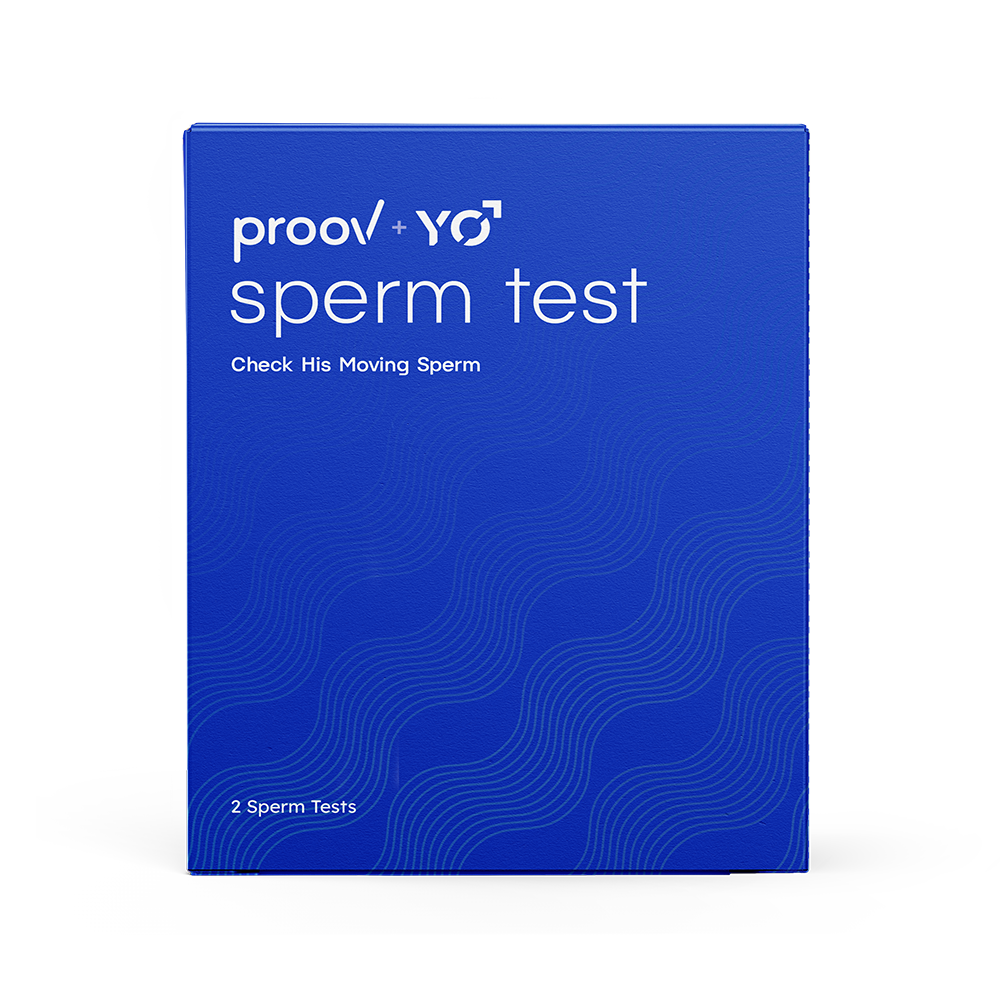Written by: Dr. Amy Beckley, PhD, Founder and Inventor of the Proov test — the first and only FDA-cleared test to check for successful ovulation at home.
Written on: 6/22/22
If you’re thinking about trying for a baby soon or if you’ve already started trying, you may have heard the term “fertile days.” Along with lots of other new terms — let’s face it, the fertility world has an entirely different vocabulary! — you may be wondering exactly what “fertile days” means.
Basically, your fertile days are the days when it’s possible for you to conceive. And yes, that does mean it’s not possible to get pregnant at any moment (more on that in a few).
Keep reading to learn more about when exactly your fertile days occur and what type of fertility testing can help you find them.
What exactly does “fertile days” mean?
As we mentioned, your fertile days refer to the days each month when it’s possible for you to get pregnant. In other words, these are the days when sex is most likely to result in pregnancy.
Unlike what we may have been taught in school, it actually isn’t possible to get pregnant at any moment. There are days during your cycle when you’re more likely and less likely to get pregnant if you have sex.
This has to do with when you ovulate, i.e. release an egg. Conception can only occur if sperm meets egg — pretty simple. What some couples may realize is a little more complicated is determining when exactly sperm and egg will have a chance to meet.
In fact, you really only have up to 6 fertile days each month. This is because after an egg is released during ovulation, it can really only survive and be fertilized for up to 24 hours. That’s not a whole lot of time!
Sperm, on the other hand, can live in the female reproductive tract for up to 5 days. This means your best chances of sperm and egg meeting are actually if the sperm is present and waiting for the egg to be released.
So, your fertile days are the days leading up to and the day of ovulation. Studies show that these are the days where your chances of getting pregnant are the highest; after ovulation the chances of conceiving drop drastically.
By now you may be thinking, Okay, that’s great and all but how do I know when I’m most fertile? Great question! This is where at-home fertility testing can be a huge help.
At-home fertility testing can help you find your most fertile days.
How do I find my most fertile days?
At-home fertility testing — specifically at-home hormone testing — is the best way to find out when you’re most fertile. Ovulation tests measure the hormones that control your ovulation, so you have a better idea of when exactly it’s coming and when you’re most fertile.
Most ovulation tests measure luteinizing hormone (LH), the hormone that spikes right before ovulation and causes your ovary to release the egg. This is often referred to as an LH surge.
Studies show that ovulation typically occurs about 12-36 hours after that LH surge. Ovulation tests turn positive when LH is surging.
So, a positive ovulation test identifies your 2 most fertile days that cycle (also called “peak fertility”). Once you get a positive ovulation test, you should have sex if you haven’t already.
But, you may remember that you can have up to 6 fertile days each cycle. Since most ovulation tests that measure only LH find your 2 most fertile days, you may be wondering how you identify the most fertile days possible — so you have the maximum amount of time to “try.”
Even before LH surges to trigger ovulation, your estrogen levels will rise as your body gears up for ovulation. In fact, a rise in estrogen levels earlier in your cycle is the first sign of your most fertile days.
Most women will use an ovulation test that only measures LH, like Proov Predict. If you choose to go that route, we recommend testing for multiple cycles to develop a pattern.
That way, you can start trying before you get a positive ovulation test. More days to try means more chances of getting pregnant!
If your cycles are irregular or you’re interested in getting a little more information about your most fertile days, we recommend choosing an ovulation test that measures both LH and estrogen (often via its urine marker, E1G).
Proov Complete measures both LH and E1G so you can identify up to 6 fertile days each cycle and maximize your chances of success!
Once I’ve “tried” during my fertile days, then what?
After you’ve had sex during your most fertile days, it can seem like a bit of a waiting game until you can take a pregnancy test (about 2 weeks after a positive ovulation test). The good news is these 2 weeks don’t have to feel like a completely black box!
While ovulation tests provide great information about when you’re most fertile, they actually don’t tell you anything about whether or not ovulation occurred. Nor do they give insight into “successful ovulation,” meaning if your ovulation is going to allow for a higher chance at pregnancy.
PdG is the marker of progesterone found in urine. It’s only released after ovulation occurs, meaning its presence confirms ovulation.
Additionally, having enough PdG after ovulation is critical to determining whether or not that ovulation was “successful.” A successful ovulation can lead to a higher chance of pregnancy, as it can signal that your body is prepared to accept that pregnancy.
You can check for successful ovulation with the Proov Complete kit! That’s right — you can predict and confirm successful ovulation all in one convenient at-home test kit.

You can predict and confirm successful ovulation all in one convenient, at-home test kit!
Those results will help you understand if your body is conception-ready, or if you may want to check with your doctor about some additional PdG support.
While “fertile days” may sound like a confusing term, finding them is actually pretty simple with at-home fertility tests like Proov Complete!













